Polar explorer transition morning at JFAN
Year 5 and 6 pupils from Chrishall Primary School were treated to an exciting morning of science activities linked to the Polar Explorer Programme today at Joyce Frankland Academy Newport.
They began by learning about the Earth’s atmosphere practically, by producing a ‘chromatography atmosphere’.
Next they did a practical involving smearing lard onto their hands and testing their pain tolerances in iced water. compared to without the fat. This simulated the insulating effect of blubber on polar species.
A very enjoyable morning was had by all thanks to Dr Katie Ellard and the JFAN Science Department, and the collaboration between Dr Ellard, Alex Porter and Clare Warren (our polar ambassador).
The PSQM result is in!
I am pleased to announce the news that our school achieved a Gold PSQM award!
Thank you to everyone that has contributed, encouraged, and done extra in support of our submission – it was all worth it, and I hope we will continue to value Science at Chrishall!
Mrs Porter
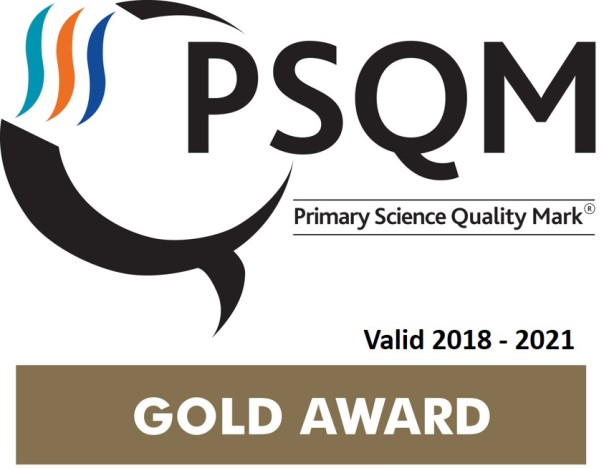
XL Catlin Arctic Live with Digital Explorer
Today Class Newton took part in a live Q&A session via YouTube with Ellie MacKay who is a TV science presenter, and currently in the Arctic. The children had previously thought of questions to ask her, and I had selected the best to send beforehand.
You can see the full session here:
Earlier in the week the children had taken part in two live experiments on ocean acidification. On that occasion we had some technical difficulties with sound but today everything was working well. We have been asked to send video footage of the classroom for a newsbite on Discovery Education. We hope that it gets chosen for the programme.
Crick, Watson and Franklin
Dr Julia Wilson, (mum of Eleanor in Year 6) works at the Sanger Centre in Hinxton and had the pleasure of meeting Watson, famous discoverer of DNA there. She thoughtfully took a school copy of Homelab by Dr Robert Winston (which Eleanor is currently reading) to work with her for him to sign! How cool is that?!
Antarctic Inspiration
Today, Luke Whittaker came to give an assembly. Luke and Cath design video games and Luke recently went on a trip to Antarctica to get inspiration for designing a game.
Luke draws plans and makes models to make gaming apps…
He uses stop motion photography to create movement…The models are even taller than him, and a robotic arm is used to view the model from different angles.
This is another game that he has made that is like a pinball machine and it makes splashes of paint. He also made the game Lumino City.

To make a really good game with Antarctica as the location it was really important to go there and experience it first-hand. Luke had to fly to Chile to get there. Antarctica isn’t an easy place to get to.
Some different modes of transportation in the Antarctic.
Luke used an iPad to sketch sometimes.
The wildlife was amazing. The penguins were really cute and there were many different types…Luke’s favourite was the Rockhopper penguin. Luke showed us some footage of penguins swimming – they flew up and down in the water just like dolphins!
Luke also saw orca whales and filmed them using a waterproof camera with just a hand under the water, because the water is so cold. A nod to Chrishall – Luke is wearing a school woolly hat!
The seals were quite cute too…
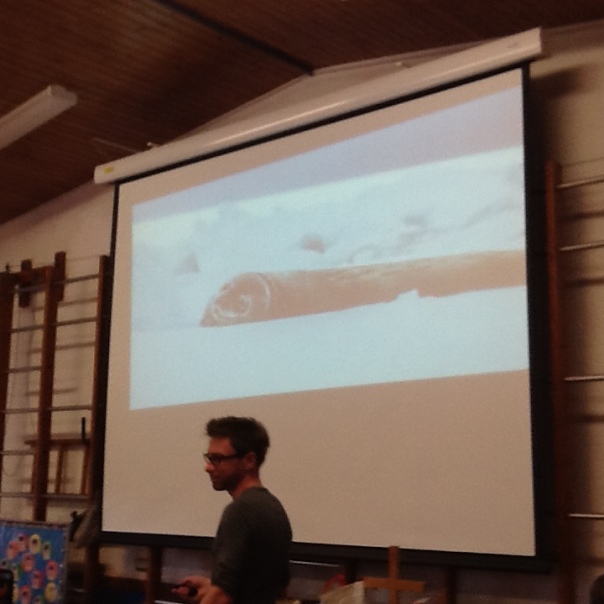
Luke works in different media. he did some printing on plastic…he drew plans and annotated sketches and drawings. He also wrote a diary and enjoys storytelling.
Luke clearly loves what he does. If you enjoy story writing, maths or drawing then you could design games like him too. We had lots of questions for Luke. It was great to hear about his work and hopefully we have some future game designers in school.
Rocket themed activities in KS1
This topic has proven to be very engaging for the children in KS1. They had a great time when Mad Science visited them for some rocket themed fun. A day of Roaring Rocket Science with workshops lead by Cosmic Karen from Mad Science with investigations inside and out. The children dressed for the occasion and learned about air pressure and flight, thrust and drag, pushes and pulls and of course the power of gravity. They created paperclip helicopters and landed lego rockets into the drop zone. Outside the children helped create a loo roll solar system and blasted rockets the length of the football pitch. Thank you to the mums, dads and grandads who came in to help us.
The children have continued their rocket-themed work in the class room, and done some lovely homework too. I particularly like their space buggies – they are such great designs! We have shared some lovely stories and information books about space travel and it was also interesting to hear about the bridge building over moon craters activity during science week. Some great cross-curricular links with Design and Technology. There have also been cross-curricular links with PE as the children measured their heart rates. It is really important for astronauts to be super fit. Pushes and pulls have been tested on the rope swings in forest school. It was all good fun!











Evaluating science at Chrishall
In an effort to find out what the children from across the school think about science at Chrishall we asked them what they like about Science and what would be ‘even better if’. We asked children in each class and gathered their responses to form a display.
We also have a ‘blob’ diagram to look at – you can think about which blob you might be.

The display is in the corridor outside KS1 class rooms – please take a look when you are next in school. We will be looking at the responses and seeing if we are meeting all of our Principles of Teaching Science. It certainly looks positive for Science, and there is plenty of practical science going on – the children are enjoying their science experiences in all classes. Thank you to all the staff for making this happen, it has been a real team effort.
Antarctica Uncovered
Today as part of the Cambridge Science Festival the British Antarctic Survey on Madingley Road opened its doors to the public for ‘Antarctica Uncovered’. I went there with my family. On arrival we watched a film about the important work that BAS does in the Antarctic studying climate change and habitats.


Above: RRS James Clark Ross
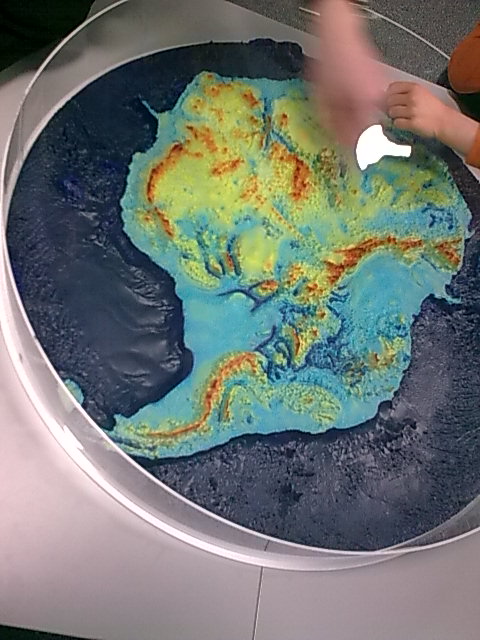
Above: the positions of the mountain ranges beneath the ice in Antarctica

Above: award winning photography
We looked at an amazing selection of specimens that have been found in the Antarctic:
The ammonite was enormous! There was an octopus beak, various molluscs, isopods and a sea spider which interestingly has 10 legs and gets oxygen through its legs. There were various crustaceans including the ‘Hoff’ crab (which has a hairy chest like David Hasselhoff). There’s a creature called a heteromorph ammonite that looks like a paperclip!
Science and art links…
An autonomous underwater vehicle (AUV):

The food that you would need to take on an Antarctic expedition:
RRS Sir David Attenborough, currently under construction:
We also learnt quite a lot about penguins!
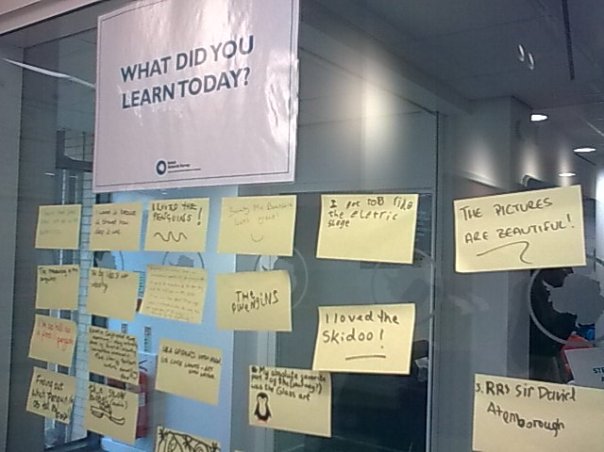
The skidoo looked like fun!
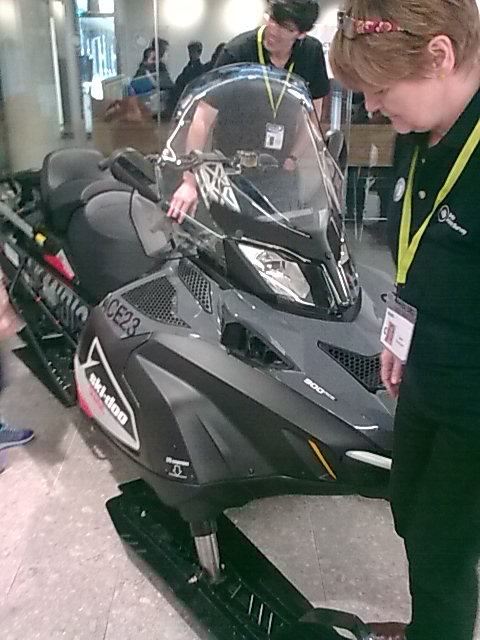
Archive footage of ‘how to prepare your huskies and sledge’ for an Antarctic expedition, circa 1957, very entertaining! One of the huskies tearing open some pemmican! Sadly huskies are no longer allowed, due to concerns about bringing in infectious diseases to Antarctica.
A typical tent for use in Antarctic. You would always have to remember to brush off the snow using a special brush when packing away. Pack down the sides with snow so it doesn’t fly away in a blizzard!
A scale model of the Halley Research station.
The BAS building and nearby building. I’d like to go there next…
What did you see at the Cambridge Science Festival?
Science week trip to Mundipharma for year 5 and 6
There has been extra excitement in school as this week is Science week!
We started off on Monday with an assembly about the Primary Science Quality Mark, which the whole school is currently working towards and I shared our portfolio.
On Tuesday Class Newton went to Mundipharma which is a pharmaceutical company on the Cambridge Science Park. I used to work there as a chemist so there were some happy memories for me too!
Building 196 where the activities took place:
Lisa Taylor led the activities – she visited us recently in her role as STEM ambassador to run activities at Chrishall in KS2 on the topics of Sound and Light.
If anyone could spot a couple of spelling mistakes in the activity booklet they could win the newly released Little Miss Inventor book – well done Charlie for spotting those!
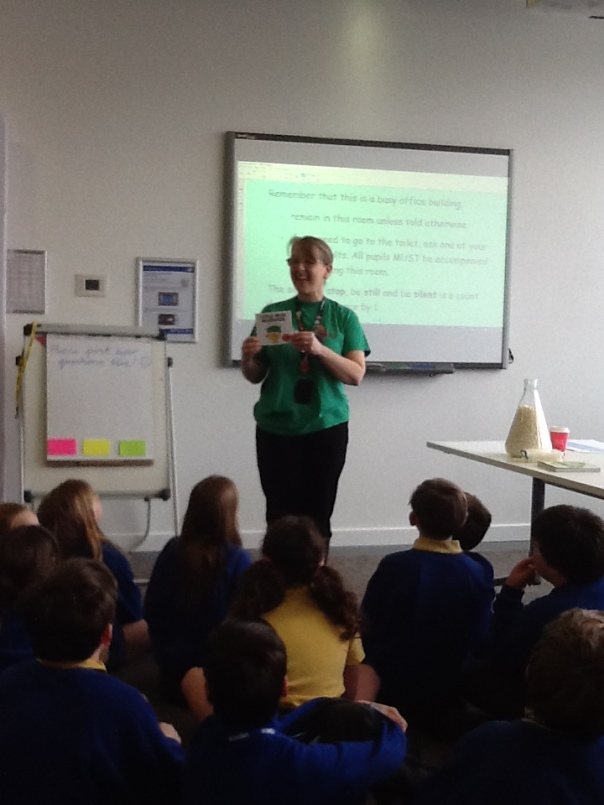
We learnt about asthma and how the trachea becomes constricted. Megan is holding two trachea, the one on the left is the person with asthma and the one on the right is the one without.
Apparently if you run on the spot whilst breathing through a straw and holding your nose, that is what it feels like to have asthma.
We learnt about osteoarthritis and tried on some gloves that were lined with different textures to show what it feels like to have the condition as the hands are the most commonly affected. Try opening a bottle of pills when you have osteoarthritis, it’s not easy, and so that has to be thought about when designing packaging.
We used stethoscopes to listen to our heartbeat.
We watched Indiana Jones this week in class, well now meet Indiana Bones! Ruby and Louie had the pleasure of dressing up to work in a manufacturing facility. Louie is sporting the latest in beard guards.
We made our own formulations to fill some capsules using powder paint, flour, salt and sugar.
Careful mixing was required…
We had to fill the capsules to half full, and then they were weighed. The target weight was 400mg.
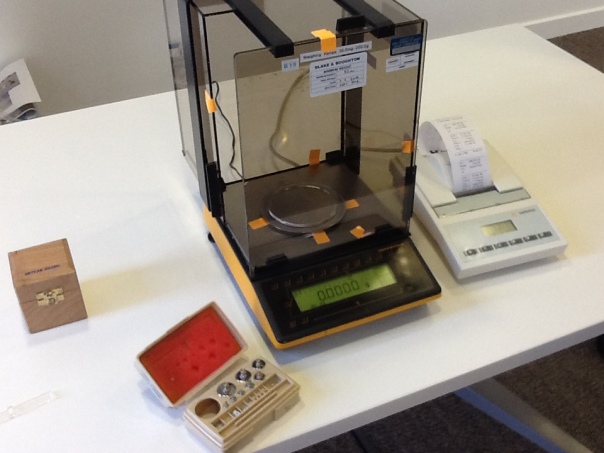
A capsule was dropped in a pot of water at body temperature, spun using a magnetic stirrer and timed to see how long it took the capsule to dissolve.
We then had our lunch. In the afternoon, no-one could resist a giant game of Operation!
We learnt about pain thresholds and did an activity where you were timed to see how long you could keep your hand in icy water.
We designed our own blister pack boxes for a medication of our imagination! There was plenty of creativity in design, and we had to include the name of the product, the dosage instructions, the batch number, the expiry date and any warnings that might be needed.
The learning environment was very informative.
During the day, we were estimating the number of capsules in the conical flask. The winner with the nearest estimate was Joel and he won the book in the photo. I think I might be buying a copy of that…
Throughout the day we were invited to post questions on to a board of things that we wanted to find out:

All of these questions and more were discussed. Lisa has emailed me to let me know the answer to the question about capsules. Apparently they fill about 300 million of them a year!
Time to go home. The ‘toast rack’ building was built in the 80s, and still looks futuristic today. There’s some great architecture to see on the Science park. Thank you very much Lisa and Jade for a very interesting day!
Stephen Hawking 8 January 1942 – 14 March 2018
Sad news this morning of the death of Stephen Hawking. Our thoughts are with his family, who must be so proud of what he achieved.

















































































































































